
NOV has the largest small cell offering in the market.[Photo: Courtesy of NOV]
The pros at National Oillwell Varco illuminate the path to durable, easy-install lighting infrastructure.
Connecting people to services and lighting the way, lighting infrastructure poles have a heavy workload but are rarely afforded a second glance. At best they might be drafted into a second job of advertising a Friday night gig for a local band or a desperate call to help find Fido.
But the design, engineering, and functionality of these stalwart workers deserves more consideration, says Kim Konte of National Oillwell Varco (NOV), a leading manufacturer of Ameron™ street lighting and traffic control products for more than 75 years. “So many things go into the manufacturing of our poles: from the material, the fabrication process, the finishes—it’s not purely about aesthetics,” she says. “The engineering that goes into creating a pole must not only meet the design needs of the customer, but it must also be safe and properly fit the application.”
NOV’s Ameron poles are found anywhere you find people: local streets and state highways, shopping centers, pedestrian pathways, industrial sites, and municipal complexes. To meet the needs of each of those spaces and their climates, NOV’s pole products are custom engineered and manufactured by a team with a deep knowledge of best practices and a drive for continued excellence and improvement. “We’re a diverse team,” Konte says. “We have a broad range of skill sets, backgrounds, and knowledge that gives us an edge to be more robust.”
FROM OUR MAR+APR 2019 ISSUE
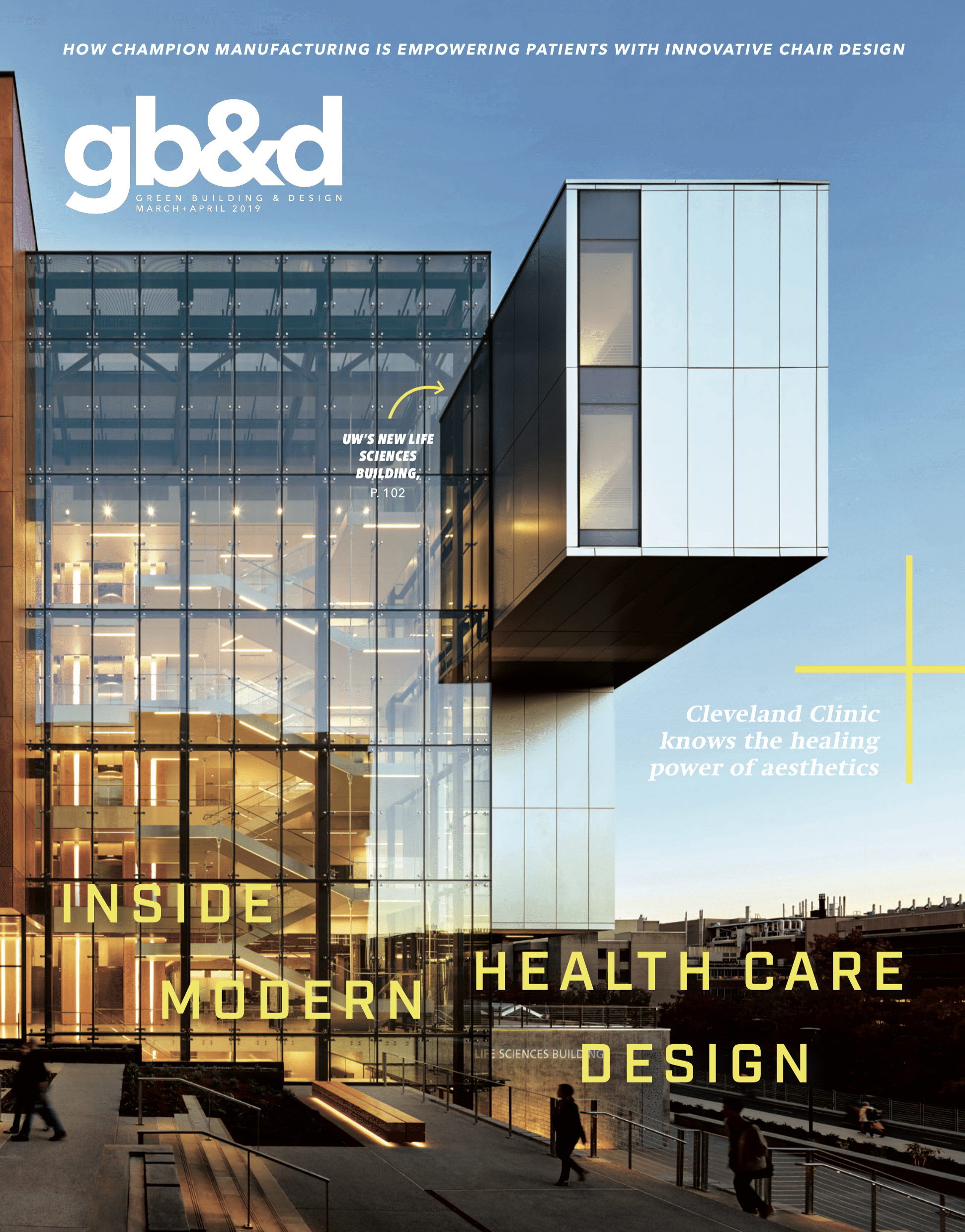
The preferred publication of leading green professionals.
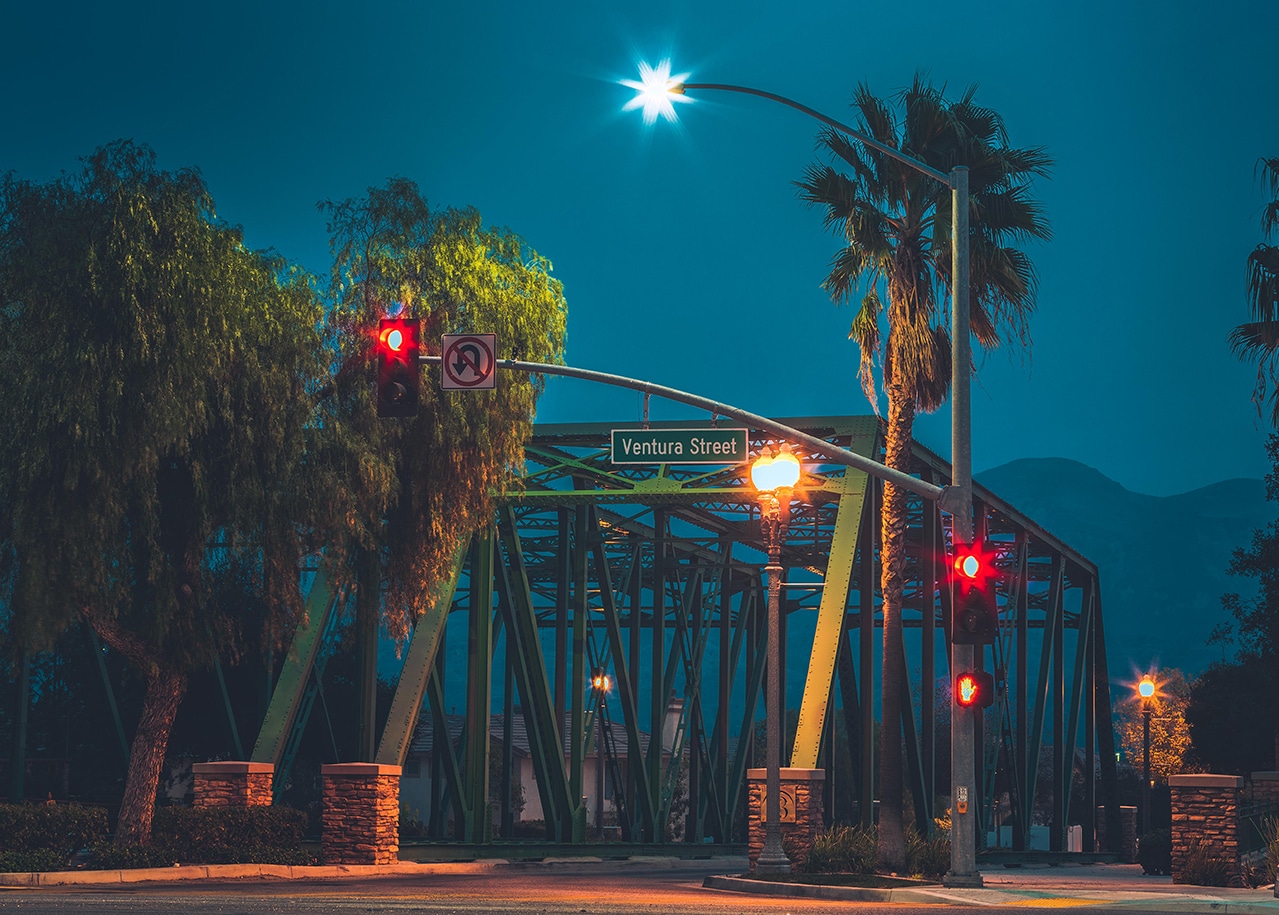
[Photo: Courtesy of NOV]
Steel Poles: High-Grade & American-Made
The company’s steel pole product lines typically support street lights, signal lights, traffic camera mountings, and signs. Manufactured from high-grade, American-made steel to meet national highway design and construction standards, NOV’s steel designs are weather resistant and quick to install.
Transportation projects coming from municipal and state departments of transportation supported the expansion of the NOV steel fabrication facility in Tulsa, allowing the company to meet specifications for transportation projects nationwide. “Based on our engineering capabilities and our focus on being solution-oriented, we are able to accommodate the specifications our customers have,” Konte says.
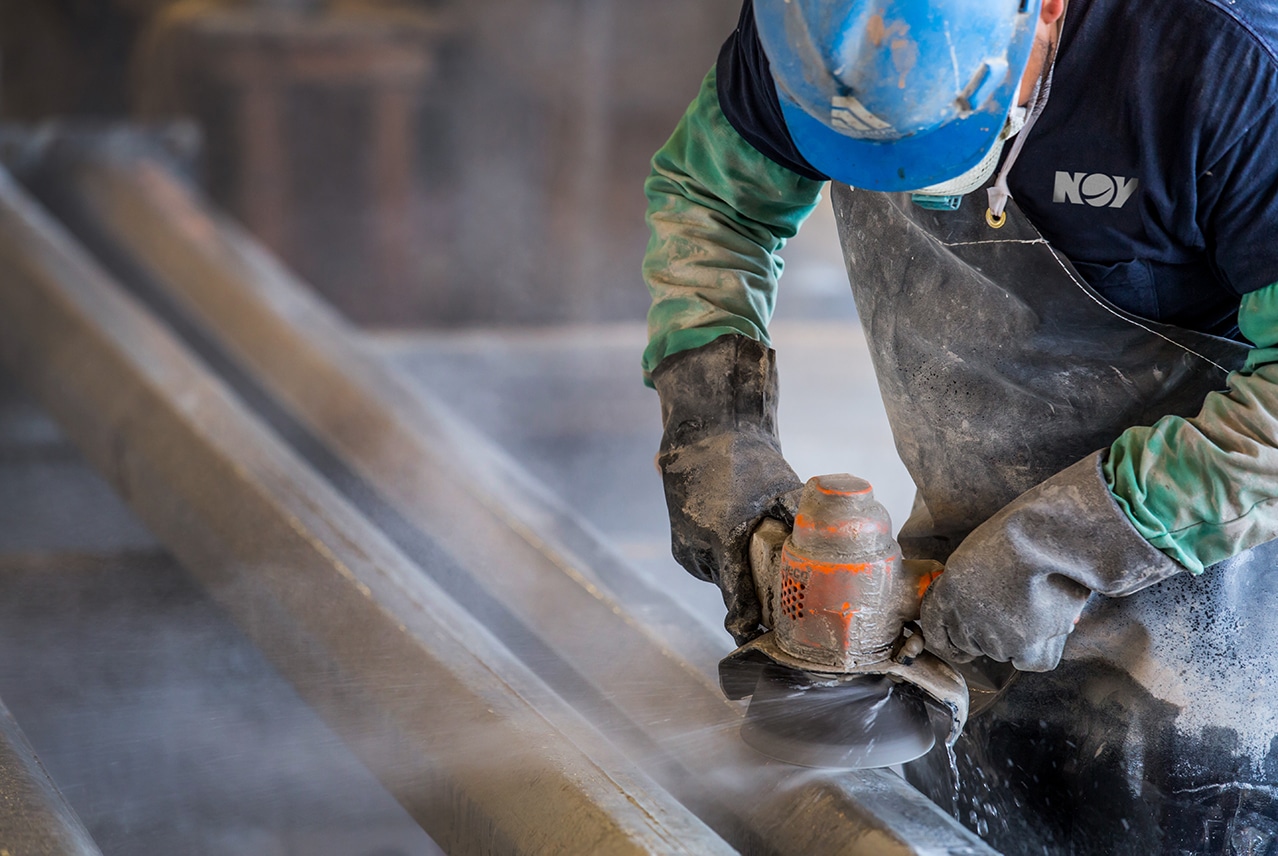
[Photo: Courtesy of NOV]
Small Cell Poles: Wireless Options
With people, municipalities, utilities, commercial districts, and transportation programs increasingly connecting to data through smart applications, NOV’s latest offerings are built to meet 21st-century needs. “Our most innovative product line is our new small cell line,” says Michael Mize, director of operations at NOV, who joined the company in 2005. “The innovative designs and product versatility to adapt to different designs of telecommunication equipment make this product attractive. We strive to meet the needs of this rapidly developing market.”
With the largest small cell offering in the market, NOV is poised well to serve this market as it grows. Fifth-generation, or 5G, is the next big thing in broadband rollout, enabling rapid speeds to support an array of IoT applications, according to a report from the Brookings Institute. Part of this rollout requires the installation of 5G-capable small cells—smaller equipment, but more of it placed in closer ranges. According to the Information Technology and Innovation Foundation, communities will need anywhere from 10 to 100 times the amount of existing wireless poles. Industry strategy consultancy firm Accenture Strategy estimates the total number of cell sites in the U.S. will need to double within the next few years to keep 5G rollout successful.
NOV’s Ameron small cell poles allow customers to build out telecommunications networks within the architectural plans and aesthetic of their current standards. A municipal customer, for example, might have a standard decorative look for street lighting. When the customer is ready to build out its telecommunications network to increase speeds, it’s able to do so using the same poles with the same look, same level of durability, and increased ability to tie heavy tech equipment and applications to pole loads. “We’re leaders in the small cell space, and no one else can really match our capabilities,” Mize says. “Combining our decades of engineering experience with our robust technology offerings is allowing us to build a product that’s far ahead of what our competitors can offer.”

NOV’s Ameron concrete poles are prestressed with high tensile steel that’s stretched before concrete is cast, then released to maintain concrete compression during normal service conditions. [Photo: Courtesy of NOV]
Concrete Poles: Beautiful, Durable, and Resilient
Where steel offers a minimalist workhorse often useful for traffic control needs, NOV’s Ameron concrete poles offer more decorative solutions, particularly for industry and walkable street lighting, while maintaining or even increasing high standards of durability and performance. “Concrete poles are great for a wide range of applications and areas with weather-related issues—bridges, surveillance, flag poles, and pathway lighting,” Konte says. If improperly treated or damaged during install, steel can be exposed to rust and corrosion, but concrete resists salt and other climate-related damage.
During manufacturing, high-tensile steel is pre-stressed in a process that increases the strength, resiliency, and longevity of the poles. The poles are centrifugally cast using high-strength concrete to yield a denser concrete that’s stronger and able to bear heavier loads of equipment. The concrete encapsulates and protects the steel, also helping to reduce the freeze-thaw wear and tear of cold weather climates.
Durability: Built to Last
Using high-grade materials manufactured to meet national guidelines ensures a high-quality product to start. NOV’s Ameron steel poles are typically finished with a dip in molten zinc, a galvanization processes that coats the steel and prevents corrosion.
Concrete is a more naturally durable material, and NOV’s pre-stressing process increases both the strength and resiliency of the poles. Optional concrete pole coatings can also offer graffiti resistance, while other sealers protect decorative finishes and structural integrity.
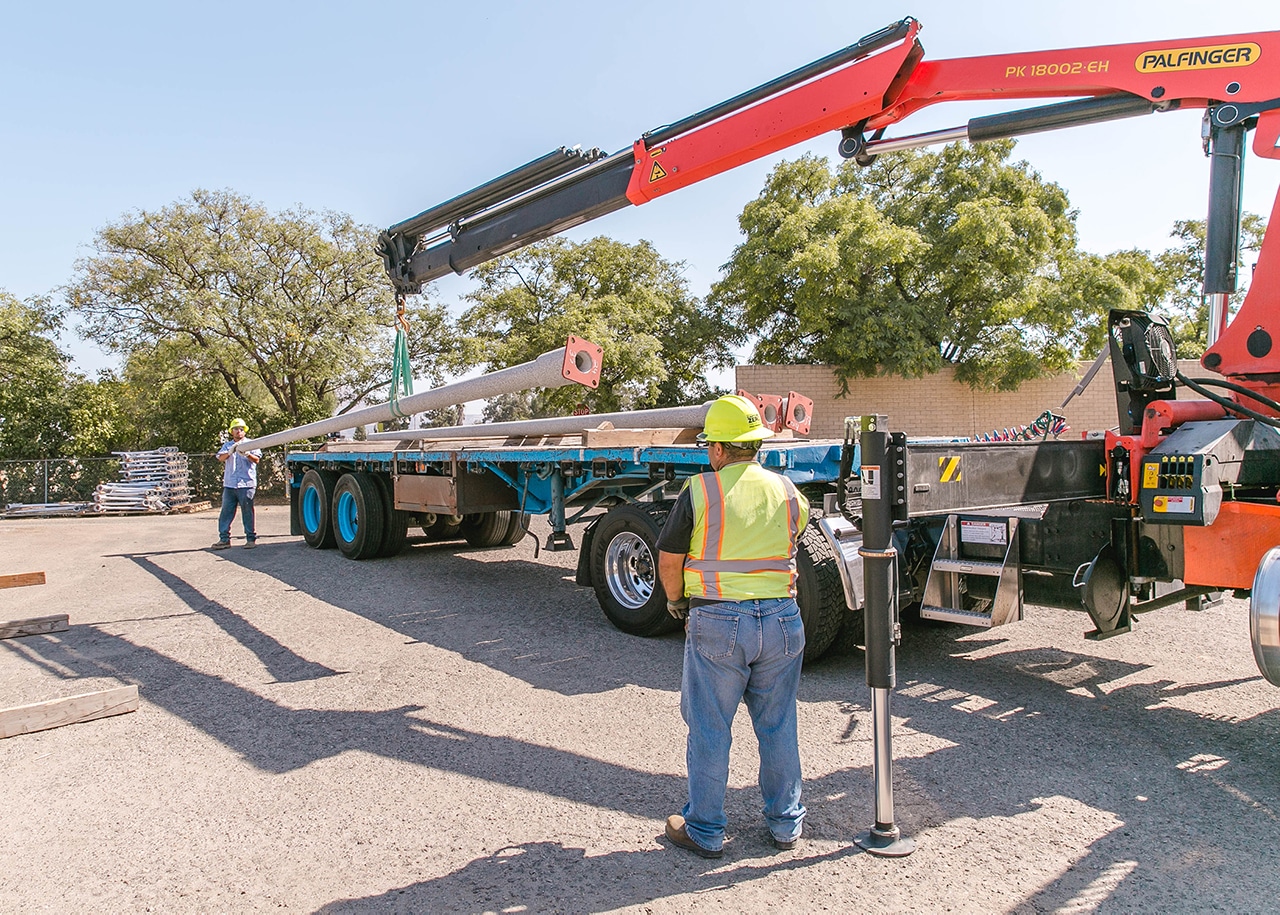
From delivery to unloading and installation, NOV provides a true turnkey solution with their field support services. [Photo: Courtesy of NOV]
Manufacturing Efficiencies: Modular Means More Possibility
NOV has developed a strong reputation in the industry due to an extensive product line that ensures manufacturing efficiency as well as its ability to customize to customer needs. “We work together with our customers as a true partner to find solutions within our product family to fit their needs,” Konte says.
One of the best ways NOV marries efficiency with customer needs is through modularity of design. Engineers consider and develop ways to support multiple uses on a single structure to accommodate ever-changing technology and location-specific requirements. “This minimizes the time needed for the design cycle and alleviates the need to develop one-off, single-application structures,” says lead engineer Kurt Blackbern.
In basing designs off current equipment and current code requirements, competitors have limited their clients’ abilities for future upgrades. IoT, edge computing, and 5G technology are changing much faster than structural components that usually dictate a municipality’s decision to change out its infrastructure. “By designing things that are more modular, we facilitate future technology upgrades without doing a structural change out,” Blackbern says. “By creating one particular aesthetic look and creating as much functionality for a customer as possible, we allow customers to take that design and use it with various configurations for any site’s criteria. They’re not forced into one little box.”
Forward-Thinking Consultation: Prepping Poles for the Future
NOV’s design process is one part problem solving customer-specific needs, one part research into ongoing industry trends, and one part customer education. “From an engineering standpoint, we need to make sure we include the functionality specified at any given moment and keep an eye to what could be added on in the near future,” Blackbern says. “With ever developing technologies, you have new tech constantly being deployed. We make sure our end-users understand the market is changing, and it’s best to be prepared now rather than having to do multiple structural change-outs.”
An easy example is the municipal holiday banner: A city or town orders poles designed with only lighting in mind and later wants to put up seasonal decorations. “They hadn’t thought about this upfront, and those kinds of things can cause issues,” Blackbern says. It’s something his teams run into again and again.
Festive banners on Main Street aside, cities conducting beautification projects to replace aging infrastructure often give little thought to future trends. Their focus is on replacing a single-purpose lighting structure with another single-purpose lighting structure. “What we often find is that a one-to-one replacement causes future problems,” Blackbern says. “Following a single-use design replacement are industry needs with new requirements.”
In the past, that problematic change came with the deployment of LED street lighting technology, which required less in the way of heavy equipment. The lighter and brighter tech also affected the structural soundness of lighting poles, which were designed to certain wind and load configurations. The new sizes and weights of the lighting equipment dictated updates to the structure of the pole itself. “In our current space, a lot of build-ups are based on old 4G technology,” Blackbern says. “But we’re going to see a lot of new requirements for 5G coming out for these structures, and we’re pre-empting that.”
Telecomm’s major carriers are already working with equipment manufacturers like Philips and Nokia to test new technologies. “We’re working with municipals to help them understand what’s coming, so that, as they’re doing their replacements, they can be ready for carriers to come in,” Blackbern says.
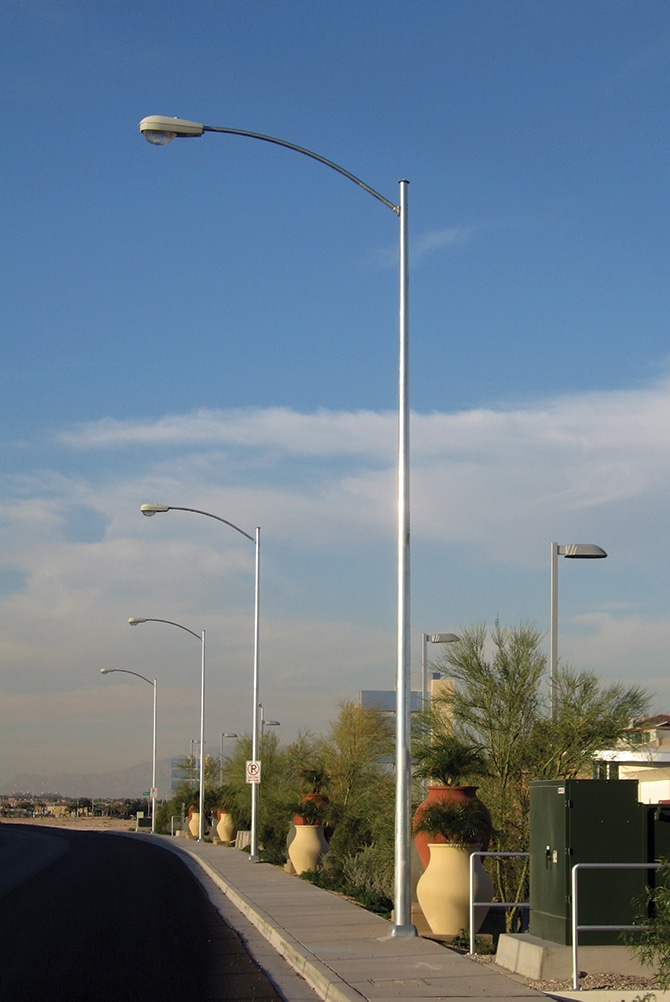
Steel poles are commonly used in street lighting. Every batch of NOV’s Ameron poles are galvanized and meet rigorous quality standards. [Photo: Courtesy of NOV]
Aftermarket Services
In efforts to strengthen our relationships with our customers, we are expanding our aftermarket services nationally,” Konte says. “By using these services, our customers will have the ability to focus on their core business, while NOV provides a turnkey solution for their lighting needs.”
These services, which include delivery, storage, manpower to help unload, installation services, and post-installation inspections, cost less than similar services from third parties and come with the added bonus of insured warranty compliance
DID YOU KNOW?
All of NOV’s poles meet American Association of State Highway and Transportation Officials (AASHTO) standards.
AASHTO and organizations like the Federal Highway Administration (FHWA) found that increased nighttime visibility from roadway lighting reduces nighttime vehicle crashes by as much as 60%. Studies also show appropriate street lighting can make people feel safer in their neighborhoods. The task for lighting designers—whether for walkable areas or major highways—is the selection and specification of quality products and equipment. The FHWA asserts the use of high-quality products is critical to the operating life of any roadway lighting system, noting durability, aesthetics, and maintenance.
The lighting industry also has pole spacing layout standards, like one-sided lighting, opposite lighting, and staggered lighting. Calculations for exact layout include factors like pole height, luminaries, and wattage. These calculations, plus expert know-how, help in decisions about appropriate lighting. In a mid-sized downtown area, for example, a lamp-post structure mounted at a height of 20 feet or lower can provide lighting at a more people-friendly scale to promote walkability and improve aesthetics. For freeway ramps and intersections, high-mast styles work better.
